Winter 2022
NIDCR News

In October, NIDCR Deputy Director Jennifer Webster-Cyriaque D.D.S., Ph.D., was elected to the National Academy of Medicine, considered one of the highest honors in the fields of health and medicine. Dr. Webster-Cyriaque was recognized for her research on viral immunology in oral disease.
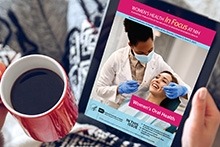
NIDCR Director Rena D’Souza, D.D.S., Ph.D., Dr. Webster-Cyriaque, and other NIDCR leaders highlighted the institute’s efforts to improve women’s health in a recent cover story for In Focus, a publication from the NIH Office of Research on Women’s Health. These efforts include research on sex and gender differences in dental, oral, and craniofacial (DOC) disease, determinants of oral health during pregnancy, DOC health of sexual and gender minority populations, as well as initiatives to foster a diverse research workforce. The issue also featured a guest editorial by Dr. Webster-Cyriaque on improving oral health equity.
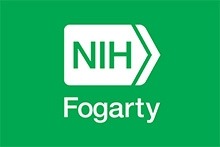
In a Q&A with NIH’s Fogarty International Center (FIC), Dr. Webster-Cyriaque discussed her path to becoming a dentist-scientist, challenges she’s faced as a woman of color in science, and her goals as NIDCR’s deputy director, including the importance of addressing oral health disparities nationally and globally.
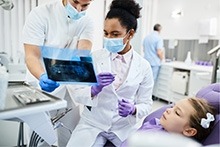
NIDCR is soliciting applications for its Practice-Based Research Integrating Multidisciplinary Experiences in Dental Schools (PRIMED) program to support dental faculty, students, and residents in conducting clinical research. Apply to PRIMED by December 15, 2022. In collaboration with the National Cancer Institute (NCI), NIDCR is also seeking applications on the early detection of head and neck cancers through the Advancing Head and Neck Cancer Early Detection Research (AHEAD) program. Apply to AHEAD by January 27, 2023.

NIDCR Senior Investigator Indu Ambudkar Ph.D., and her husband, NCI scientist Suresh Ambudkar Ph.D., recently appeared on a home makeover television series with their son, actor Utkarsh Ambudkar. In May, Utkarsh Ambudkar and his mother spoke to an NIH audience about his experiences growing up in a STEM-focused family and diversity in Hollywood.
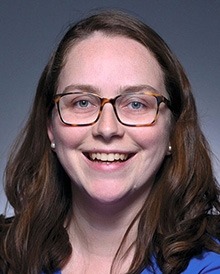
NIH announced 72 new recipients of the 2022 NIH Director’s New Innovator Awards, which support exceptionally creative early stage scientists with highly innovative research ideas. NIDCR will support Columbia University’s Joanna Smeeton, Ph.D., whose project will focus on craniofacial joint regeneration.
Training News

As part of NIDCR’s dedication to building an inclusive and diverse research training and career development community, I am pleased to introduce the Training News section of NIDCR’s quarterly e-newsletter. This section will offer resources, opportunities, and announcements for students, trainees, mentors, and prospective applicants. We hope you find it to be a useful and informative resource as we strive to foster the next generation of scientists working to improve oral health for all.

If you are submitting a grant application due on or after January 25, 2023, you must use the new FORMS-H application package. For applications due earlier—on or before January 24, 2023—use FORMS-G. If you don’t use the appropriate form, your application will not be considered for funding.

Want to better understand the NIH grants process? Interact with NIH experts as they share knowledge, perspectives, guidance, and resources at the 2022-2023 Virtual NIH Grants Conference on February 1-2, 2023. Register to gain access to the conference, plus past and future monthly virtual preconference events from August 2022 through January 2023.
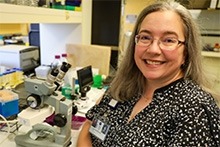
Stephanie Momeni, Ph.D., an NIDCR-supported postdoctoral scholar at Oregon Health and Science University, shares her research career path, passion for oral microbiology, and her efforts to enhance diversity and inclusion in biomedical science, in a profile for the American Society for Microbiology. Dr. Momeni, a longtime NIDCR-supported trainee who is of Cherokee ancestry, also discussed her participation in the Mentoring an Inclusive Network for a Diverse Workforce of the Future program, which supports a diverse group of early stage scientists as they transition into independent research careers.
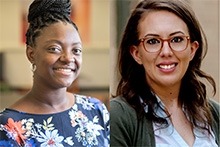
NIDCR is funding Clemson University’s Cherice Hill, Ph.D. (left), and University of Colorado’s Lomeli Shull, Ph.D. (right), as part of the Maximizing Opportunities for Scientific and Academic Independent Careers (MOSAIC) program. Led by the National Institute of General Medical Sciences, MOSAIC supports the transition of postdoctoral fellows from diverse backgrounds into independent researchers. Dr. Hill studies sex- and race-related differences in temporomandibular joint function. Dr. Shull studies epigenetic regulation of craniofacial cartilage development.
Science Advances
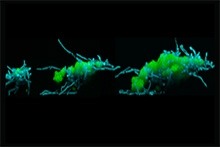
Caught on camera: bacterial-fungal clusters “walking” on tooth-like surfaces to rapidly form dental plaque and promote decay. These clusters, found in the saliva of toddlers with severe tooth decay, are more resistant to antimicrobial agents and tougher to remove from tooth-like surfaces than either species alone. The NIDCR-supported study could provide insights into interventions for tooth decay.
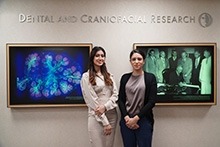
Dentists in NIDCR’s newly expanded Dental Public Health Research Fellowship program are looking beyond the mouth to tackle community-wide barriers to oral health. The three-year program aims to equip fellows with the knowledge, research skills, and training necessary to become a dental public health practitioner and independent researcher.

The concept of a toothbrush—essentially bristles-on-a-stick—hasn’t changed much as a technology since the Babylonians and ancient Egyptians walked the earth over 5,000 years ago. Now, scientists aim to transform tooth cleaning with magnetically controlled nanoparticle “robots” that can brush, floss, and sweep away dental plaque. The NIDCR-funded technology could one day help those who lack the manual dexterity to use a toothbrush.

In an NIH SciBites video, Byron Mui, a graduate student in the lab of NIDCR’s Pamela Robey, Ph.D., shares his research on how stem cells fix broken bones. He is trying to understand how stem cells learn that bones are broken and what molecular cues prompt stem cells to repair and regenerate bones. Mui’s research could help scientists learn how to “supercharge” the body’s ability to repair bone fractures.
Grantee News
NIH/HHS News
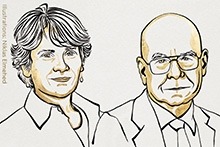
In a blog post, NIH Acting Director Lawrence Tabak, D.D.S., Ph.D., described how click chemistry, developed by Nobel Prize winners and longtime NIH grantees K. Barry Sharpless, Ph.D., and Carolyn R. Bertozzi, Ph.D., has expanded our ability to explore biomolecular processes and develop drugs, diagnostics, and other materials. Dr. Tabak cited his own research with NIDCR Senior Investigator Kelly Ten Hagen, Ph.D., on mucins—which make up the mucous linings of the mouth and other regions—as having benefited from these insights.
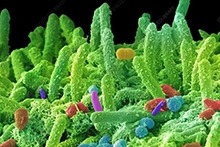
Researchers at NCI recently found that a greater diversity of oral bacteria was associated with a lower risk of lung cancer. However, the abundance and presence of certain bacterial genera, including those linked to gum disease and tooth decay, were associated with lung cancer risk, especially in former smokers. The findings suggest the oral microbiome may offer new opportunities for lung cancer prevention.

An international team of researchers, funded partly by NIH, identified several compounds that activate a pain-blunting receptor on cells called α2AAR. In animal studies, the compounds blocked pain without causing sedation, a side effect of drugs that target the α2AAR receptor. While more experiments are needed before testing in humans, the findings may inform development of non-opioid alternatives for treating pain.
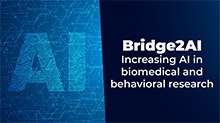
NIH is investing $130 million, pending available funds, to accelerate the use of artificial intelligence in the biomedical and behavioral research community. The Bridge to Artificial Intelligence program, managed by the NIH Common Fund, will generate AI-ready tools, resources, and data for use in biomedical research.
